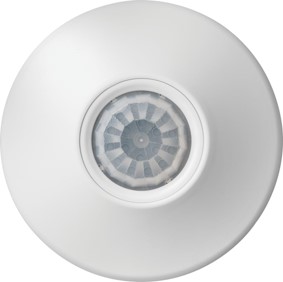Occupancy & Light Sensors
- Occupancy Sensors: Detect people, prompting HVAC to adjust (reduce heating/cooling) in unoccupied spaces, saving energy and equipment wear.
- Light Sensors: Measure natural light, allowing for dimming of artificial lights and potentially influencing HVAC adjustments for unoccupied, well-lit spaces.

Occupancy and light sensors play a critical role in modern HVAC systems by contributing to several key benefits
Energy Efficiency
- Reduced Run Time:When a space is unoccupied, the sensors detect the absence and signal the HVAC system to reduce or completely shut down heating or cooling. This eliminates unnecessary energy consumption when nobody is there to benefit from it.
- Optimized Operation:Occupancy sensors can be used to program setbacks during off-peak hours or evenings. This allows the HVAC system to maintain a comfortable baseline temperature while minimizing energy use.
Cost Savings
- Lower Energy Bills:By reducing HVAC runtime, occupancy and light sensors directly contribute to lower energy consumption, translating to significant cost savings on your energy bills.
Improved Comfort
- Automatic Adjustments:When occupants return to a space, the sensors detect their presence and trigger the HVAC system to adjust temperature settings back to comfortable levels. This eliminates the need to manually adjust thermostats, ensuring a consistently comfortable environment.
Extended Equipment Life
- Reduced Wear and Tear:By preventing unnecessary operation, occupancy and light sensors reduce wear and tear on HVAC equipment, potentially extending its lifespan and reducing maintenance costs.
Sustainability
- Lower Energy Consumption:The energy-saving benefits of these sensors contribute to a more sustainable building operation by reducing the building’s overall environmental footprint.
Additional Advantages
- Improved Building Management:Occupancy data can be used to optimize building usage and scheduling for cleaning or maintenance.
- Enhanced Security:Light sensors can be programmed to automatically turn on lights when someone enters an area, potentially deterring unwanted activity.


